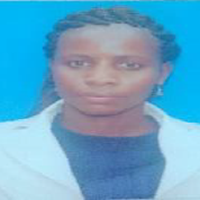Mugambi Brenda Makena

Short Student Biography
I have a Bachelor’s degree in Biotechnology from Kenyatta University (2015) and a Postgraduate diploma in Health Research Methods from Pwani University (2016). I also hold a Master’s in Bioinformatics degree from the University of Nairobi having done research project on malaria drugs resistance (2020). I have a passion to work on research on infectious diseases which are a major cause of morbidity and mortality in developing nations.
Project Summary
Thesis / Project Title: Prevalence of Polymorphisms in Plasmodium falciparum Parasites in Pregnant and non-Pregnant Women and Potential Resistance to Antimalarial Drugs in Western Kenya
Thesis / Project Abstract
In regions having high malaria transmission, majority of the population are presumed immune to malaria, with non-pregnant women showing quicker clearance of parasites in comparison to the pregnant. Study genotyped SNPs in Plasmodium falciparum genes associated with antimalarial drugs resistance to determine mutations in parasites with varying clearance using Sanger sequencing and MassARRAY. Pregnant women did not carry parasites strains having mutations conferring resistance to artemisinin. The study did not find statistical differences between the pregnant and non-pregnant women groups to support suggestions that low immunity in pregnancy could be a source of resistant parasites strains or their reservoir.


